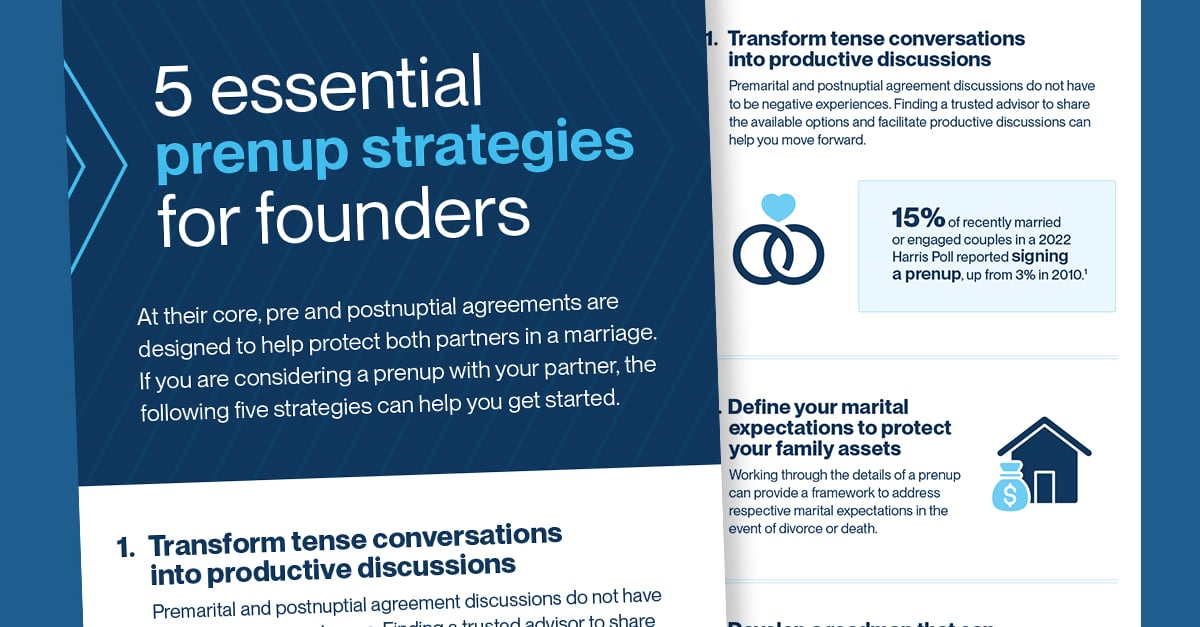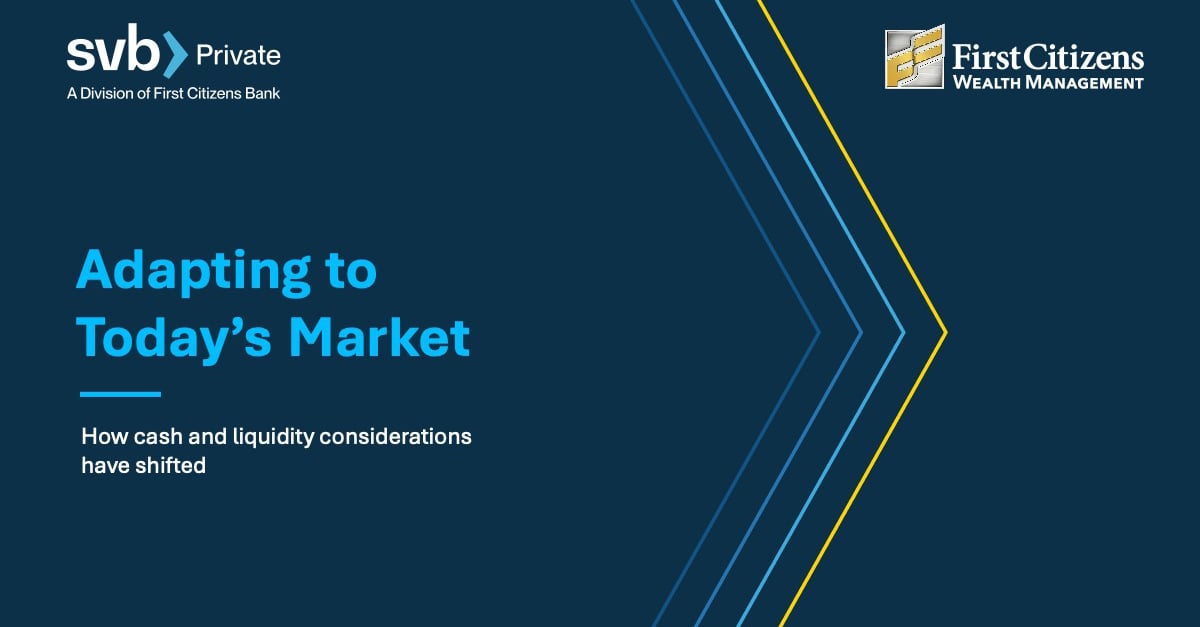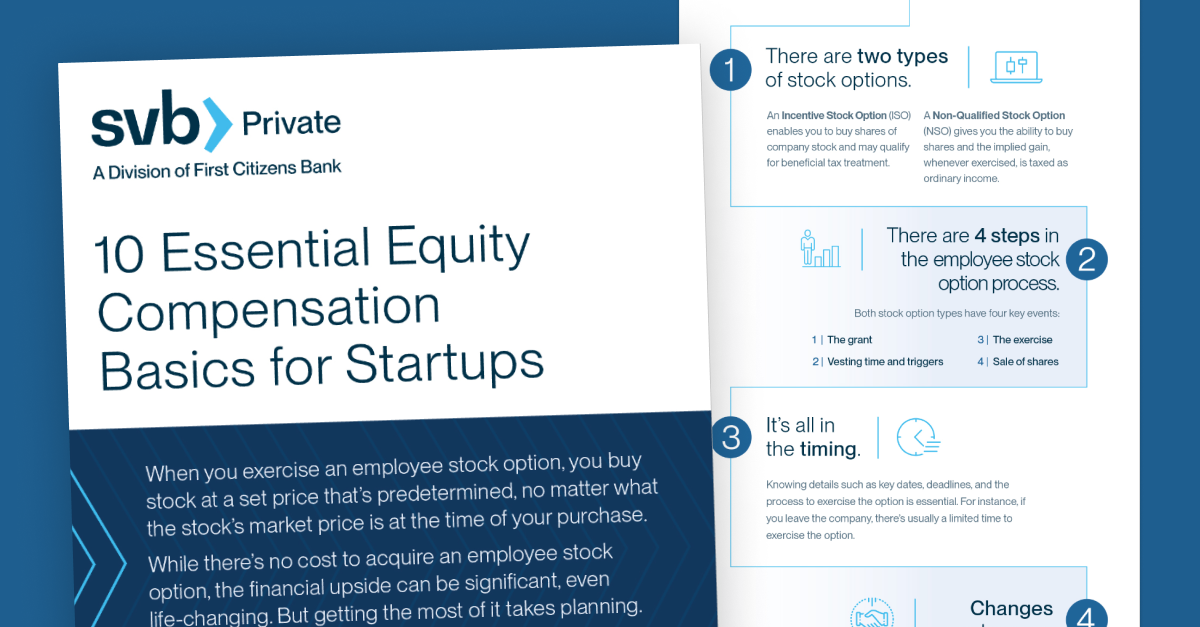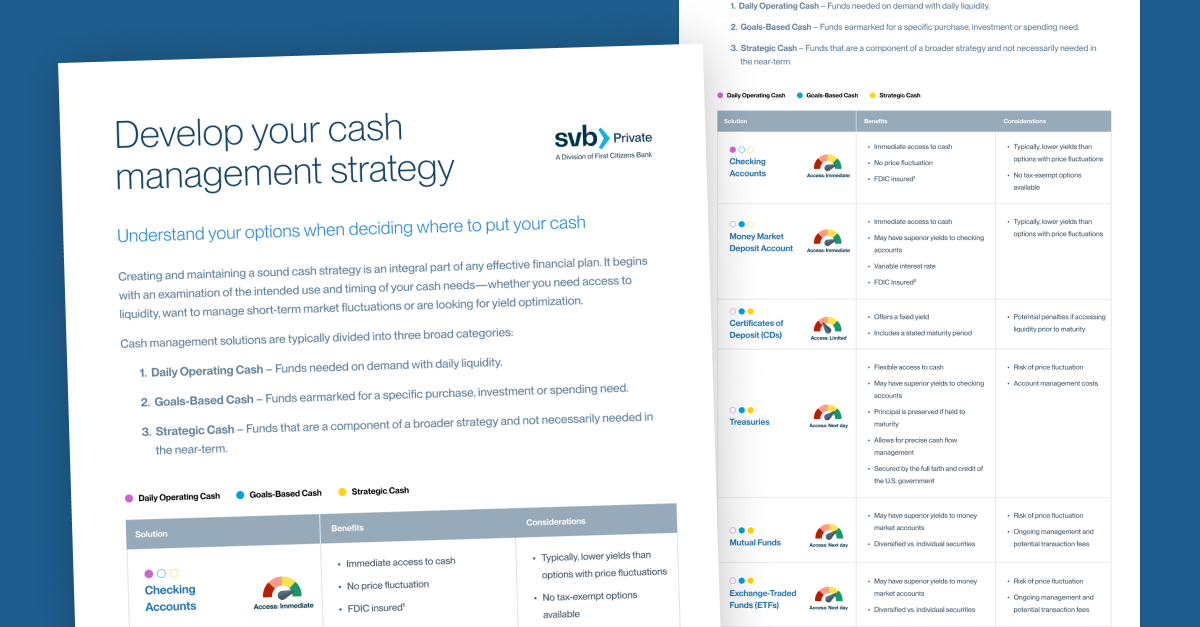Introduction
Our 2022 Quarterly Financial Planning Guide focuses on the complex planning needs of investors and entrepreneurs in these dynamic times. We believe there is a very high likelihood of tax reform and changes to the regulatory landscape. Faced with unknown outcomes, investors and entrepreneurs would be wise to focus on evergreen financial planning items.
Below are targeted planning topics investors and entrepreneurs should consider in each quarter of 2022. We recommend you work closely with SVB’s Private Bank to adjust your strategy as changes to capital gains taxation, retirement savings, estate planning, stock option vesting, and many other financial planning areas take shape.
| Q1 Quarterly planning strategies | ||
| Everyone | Entrepreneurs should also consider | Investors should also consider |
Develop an investment strategy, create a budget and organize taxes.
|
|
|
Case study
General Partner of VC firm reviews the distributions and investments that were made in her LP fund during the previous year. Working with her CPA, the GP identifies two Qualified Small Business Stock (QSBS) sales.
- One QSBS sale qualifies for Section 1202 provision which excludes 100% of the gain on the sale, limited to the greater of $10 million or 10 times the adjusted basis. The CPA documents the sale of the stock and the GP receives the first $10 million of gains free of Federal Income Tax and the Net Investment Income Tax.
- The second QSBS sale occurred after the GP owned the stock for more than six months but short of the 5-year holding period required to utilize Section 1202. In this case, the GP elects to rollover the proceeds (within 60 days of the sale) of the QSB stock into another QSB stock utilizing Section 1045. The CPA records the holding period and adjusted tax basis from the original shares into the newly acquired QSB stock.
| Q2 | ||
| Everyone | Entrepreneurs should also consider | Investors should also consider |
Focus on Retirement
|
|
|
| Q3 | ||
| Everyone | Entrepreneurs should also consider | Investors should also consider |
|
Time for a Mid-year Check
|
|
|
Case study
An Entrepreneur is working with a new advisor. During a review of their portfolio, the advisor notices mutual funds held in a taxable account (hedge funds and high-performance, high-turnover mutual fund strategies) paid out significant short-term capital gains in the form of year-end distributions. The advisor recommends moving the tax-inefficient strategies to their retirement account and keeping tax-efficient strategies, such as US municipal bonds and large cap stocks, in their taxable account. This optimizes the tax-cost of their investment strategy and gives the portfolio the potential to compound faster.
| Q4 | ||
| Everyone | Entrepreneurs should also consider | Investors should also consider |
|
Start Year-End Tax Planning
|
|
|
Case study
A Series C technology company goes through a merger with a public company for cash earlier in the year. The exit results in a significant liquidity event for the CEO. The financial advisor discusses ways to reduce the tax liability from the exit. The stock is not deemed QSBS and would not qualify for capital gains exemption. The advisor and the client’s CPA, suggest that the CEO make a sizeable charitable contribution to help reduce current year tax liability. In line with the client’s family philanthropic intentions, a discussion about Donor Advised Fund(s) (DAFs) and private foundations follows. The CEO and his spouse decide to open and fund a DAF which results in a significantly lower tax bill and creates a family fund for future charitable grants . The alternative would have been to gift shares of the private stock before the final determination letter of the acquisition had been issued to avoid long-term capital gains in addition to getting the deduction for the charitable contribution.
Case study
An Entrepreneur asks their CPA to estimate his tax liability for the current tax year. The CPA estimates they will be facing higher ordinary income tax than Alternative Minimum Tax. The CPA recommends exercising Incentive Stock Options (which increases the AMT liability) up to the point where the AMT tax liability is close to the ordinary tax liability. The entrepreneur thus receives an AMT tax holiday; he gets to exercise ISOs without increasing his tax liability.
Key 2017 annual limits relating to financial planning*
| Elective deferrals 401(k), 403(b), etc. Catch-up contribution (for age 50+) |
$20,500 $6,000 (no change) |
| IRA or Roth IRA contribution limit Catch-up contribution (for age 50+) |
$6,000 $1,000 (no change) |
| SEP IRA contribution maximum Roth IRA phase-out (married filing jointly) |
$61,000 $204,000 - $214,000 |
| Social Security wage base | $147,000 |
| Annual gift tax exclusion | $16,000 (no change) |
| Gift Exclusion to a non-U.S. citizen spouse | $164,000 |
| Lifetime Transfer Tax/Estate Tax Exclusion(1) | $12,060,000 per decedent |
| Maximum estate tax rate | 40% (no change) |
| Highest marginal fed. income tax rate (37%)—Single | $539,900 |
| Highest marginal fed. income tax rate (37%)—Married | $647,850 |
| Standard deduction – Single or married filing separately | $12,950 |
| Standard deduction – Married filing jointly | $25,900 |
| Standard deduction – Head of Household | $19,400 |
| Kiddie tax limited standard deduction | $1,150 |
| Alternative Minimum Tax (AMT) exemption—Single/Married Filing Jointly/Married Filing Sep. | $75,900/$118,100/$59,050 |
| Flexible Spending Account | $2,850 |
| For California Residents: CA College Access Tax Credit Fund** | 50% of contributed amount |
Conclusion
We encourage all Private Bank clients to set up a plan and keep at least quarterly updates in mind for 2022. These key tactical shifts to your planning will help you stay on top of what promises to be an active cycle for private market outcomes, liquidity, and the planning needs affected by new regulations and the markets. We are here to serve you with advice and help you get on track with your planning strategies.
The fine print
*No change means that there were no changes made for 2017 compared to 2016.
**The College Access Tax Credit (CATC) is a credit available to individuals and business entities that contribute to the CATC Fund in 2017. Sources: Based on current published tax rates from IRS, CCH and College for Financial Planning web sites. Individual tax rates may differ based upon current specific tax situation.
Mint and Quicken are independent third parties and are not affiliated with SVB Financial Group.














